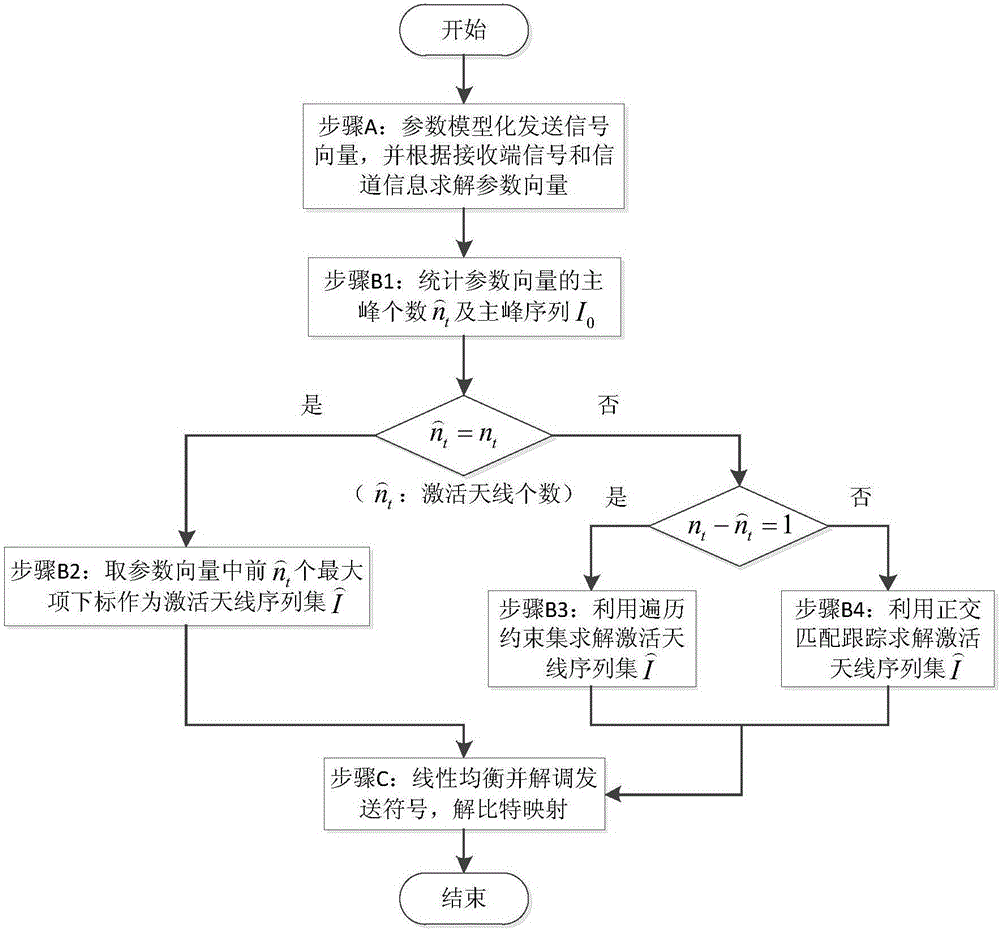Signal detection method of generalized spatial modulation system
A generalized spatial modulation and signal detection technology, which is applied in the field of signal detection of generalized spatial modulation systems, can solve problems such as increased computational complexity, gaps in detection performance, and a small number of receiving antennas
- Summary
- Abstract
- Description
- Claims
- Application Information
AI Technical Summary
Problems solved by technology
Method used
Image
Examples
Embodiment
[0056] In the environment of Rayleigh fading and additive white Gaussian noise (AWGN), the signal sending and receiving process of the generalized spatial modulation system is as follows: figure 1 shown. When 24 transmitting antennas and 12 receiving antennas are used, and the number of active antennas is 3, there are 1024 possible combinations of active antennas, and the transmission code rate is 22bit / Hz / s under 16QAM modulation. For each time slot, the active antenna sequence is determined by the first 10 bits, and the remaining 12 bits are mapped into constellation symbols in three groups, and then sent to the wireless channel by the activated antenna. The signal detection method of the present invention is mainly carried out at the receiving end, and the flow chart of the method is as follows figure 2 shown. Specific steps are as follows:
[0057] ①Model the sending signal vector x as a multivariate complex Gaussian distribution CN(0,Γ) represented by the parameter γ, a...
PUM
 Login to View More
Login to View More Abstract
Description
Claims
Application Information
 Login to View More
Login to View More - R&D Engineer
- R&D Manager
- IP Professional
- Industry Leading Data Capabilities
- Powerful AI technology
- Patent DNA Extraction
Browse by: Latest US Patents, China's latest patents, Technical Efficacy Thesaurus, Application Domain, Technology Topic, Popular Technical Reports.
© 2024 PatSnap. All rights reserved.Legal|Privacy policy|Modern Slavery Act Transparency Statement|Sitemap|About US| Contact US: help@patsnap.com










